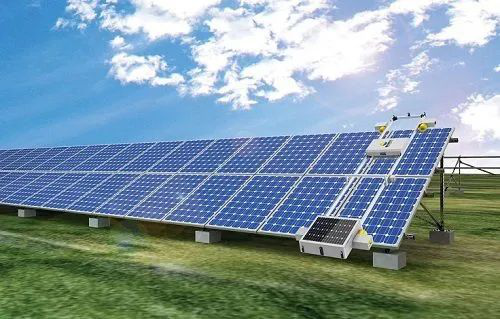How much will the power generation of photovoltaic power plants drop for every degree of temperature rise?
Due to the continued high temperatures throughout the country this summer, many photovoltaic power plant owners believe that this weather is conducive to the power generation of the power plant and they can wait for the revenue to be credited. In fact, the high temperature in summer does not mean that the power station has high power. High temperature and strong humidity will increase the burden on the power station and bring many adverse effects. The main effects of high temperature weather on components are as follows:
Cause the output power of photovoltaic modules to drop
Photovoltaic modules generally have three temperature coefficients: open circuit voltage, peak power, and short circuit current. When the temperature rises, the output power of the photovoltaic module will drop. The peak temperature coefficient of photovoltaic modules is about -0.38 to 0.44%/℃, that is, the temperature rises, the power generation of photovoltaic modules decreases. In theory, the power generation of photovoltaic power plants will decrease about 0.44% for every degree of temperature rise.

Affect the open circuit voltage and cause insufficient charging of the system
When the silicon solar cell works at a high temperature, the open circuit voltage drops significantly with the increase of temperature, and at the same time, it causes a serious deviation of the charging operating point, which is easy to damage the system due to insufficient charging. The short-circuit current of solar cells increases with increasing temperature.
In the actual research case, the output power of crystalline silicon solar cell is about 20% higher when the temperature is about 20 degrees than when it is 70 degrees. In other words, if the place where the photovoltaic power station is installed has normal light conditions, but the annual average temperature is relatively low, then it is actually beneficial to the photovoltaic solar power station. Its power generation is much higher than that of areas with excessive sunlight and high temperature.
Affect the service life of the core components of the inverter
In the photovoltaic system, the photovoltaic module is not heat-resistant, and the inverter is not heat-resistant.. The inverter is composed of many electronic components, and the main components will generate heat during operation. In the design and development process, the manufacturer will use heat sinks, fans, etc. in order to reduce the internal heat of the machine. If the inverter temperature is too high, the performance of the components will decrease, which will affect the whole life of the inverter.
Therefore, when installing inverters in photovoltaic power plants, ventilation and cooling issues are usually considered. At the same time, when wiring and cable laying, and array design and installation, it is necessary to consider whether the temperature can be used reasonably, and avoid the negative impact of temperature on photovoltaic solar power plants.
Forming hot spot effect, affecting component life
If the local temperature is too high, hot spots will be generated, which will affect the life of photovoltaic modules. The hot spot effect means that under certain conditions, a solar cell module that is shaded in a series branch will be used as a load to consume the energy generated by other solar cell modules with light, and the shaded solar cell module will heat up at this time . The hot spot effect will damage the solar cells to a certain extent. Part of the energy generated by the solar cells with sunlight may be consumed by the shaded cells. The hot spot effect of photovoltaic power plants will directly cause the service life of photovoltaic modules to be shortened by 30% and may cause component failure if this continues.
Producing PID effect and causing component failure
The PID effect is also known as potential-induced attenuation. It is the phenomenon that the encapsulation material of the battery module and the material on the upper and lower surfaces of the battery module undergo ion migration under the action of high voltage between the battery sheet and the grounded metal frame, which causes the degradation of module performance. Improper cooling of photovoltaic power plants in hot weather can easily produce PID effects and cause component failure.
China has a vast territory and most of the various climatic environments have appeared. As the temperature increases, the photoelectric conversion efficiency will also decrease. For example, due to the influence of climate and environment in most parts of our country, there will be a common temperature loss of 2% and 3%. The loss caused by high temperature in tropical regions will reach about three times , which directly leads to a reduction in the power generation capacity of the power station.
Photovoltaic power plants are susceptible to high-temperature weather and can be improved to a certain extent through reasonable system installation and design. Ensure the ventilation and heat dissipation of the components, inverters, and distribution boxes, design and layout reasonably according to local conditions, remove dust from the photovoltaic panels in time, ensure that there is no debris around the components, and pay attention to cable maintenance to achieve the most ideal power generation income .

















View More(Total0)Comment Lists